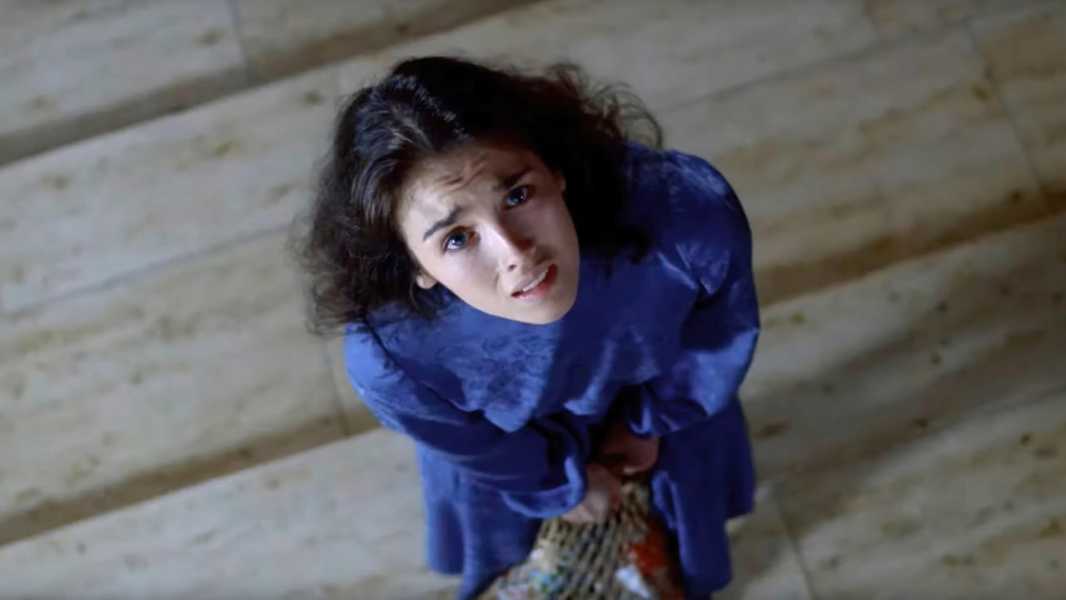
Save this storySave this storySave this storySave this story
Rachel Syme
Staff writer
You’re reading the Goings On newsletter, a guide to what we’re watching, listening to, and doing this week. Sign up to receive it in your in-box.
There is little better, when the weather turns just chilly enough to necessitate a big scarf and a leather jacket, than to duck into a movie theatre to see a film that makes your blood run cold. Sure, you can binge scary movies at home, huddled under a blanket, locked safely behind your front door’s deadbolt, with a bowl of popcorn in hand, but few experiences rival that of watching a horror flick in the company of dozens of strangers, all of you gasping in unison with every jump scare. Freaky films are meant to be shared, in the dark, like campfire tales. Starting on Oct. 29, the Lower East Side arthouse cinema Metrograph begins its “Halloween at Metrograph” series, featuring fright-night classics such as Werner Herzog’s “Nosferatu the Vampyre,” a gothic-horror adaptation of Bram Stoker’s “Dracula,” from 1979, starring Klaus Kinski and Isabelle Adjani—and thousands of rats—and Andrzej Żuławski’s creepy body-horror film “Possession,” from 1981, also starring Adjani, in which a German spy, played by Sam Neill, discovers that his wife may or may not be cheating on him with a gooey, worm-like creature. The film contains one of the great gross-out scenes of all time, in which Adjani has a bloody, violent miscarriage in a Berlin subway station and slams her body around as if in the throes of an exorcism.
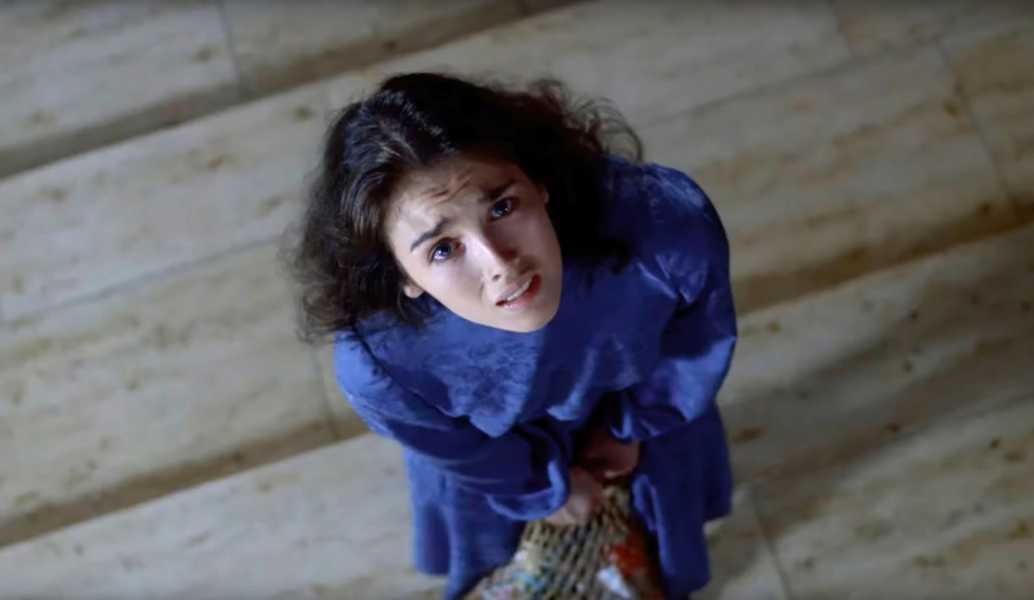
Isabelle Adjani in “Possession.”Photograph from Limelight International / Everett
If you are in the mood to see some brand-new slashers, you can check out the Brooklyn Horror Film Festival (Oct. 17-24), in partnership with Nitehawk Cinemas. The festival showcases more than a dozen independent films, at both Nitehawk’s Williamsburg and Prospect Park locations, including the New Zealand director James Ashcroft’s sophomore effort, “The Rule of Jenny Pen,” starring John Lithgow as a psychotic nursing-home resident, and the New Jersey director Ryan Sloan’s “Gazer,” about a woman who has dyschronometria, the inability to tell how much time has passed. The festival will also screen the new documentary “Generation Terror,” from co-directors Phillip Escott and Sarah Appleton, about the booming nineteen-nineties and early two-thousands horror-movie industry, and the ways in which films like “Scream,” “The Blair Witch Project,” and “Saw” forever shifted the genre. If you don’t happen to be in Brooklyn but still want to join in, the festival operates its own streaming service, called, fittingly, Nightstream.
Speaking of fresh frightening films, for my money, one of the best things you can do this season is to run to see the French director Coralie Fargeat’s “The Substance” while it is still playing on the big screen. The thriller stars Demi Moore as a famous exercise guru named Elisabeth Sparkle (think Jane Fonda in her spandex era) who is fired from her aerobics show by her piggish boss (Dennis Quaid) when she turns fifty. She is despondent and adrift and angry, until she learns about a mysterious, neon-green fluid available on the black market (the titular “substance”) that promises to restore her youth and allow her to create a “better version” of herself. What this means in gory practice is that, after just one injection, Moore’s spine splits open—a goopy, grisly sequence that is wildly fun, if nauseating, to behold—and a shiny, taut new body (Margaret Qualley, looking resplendent) slithers out. The way the substance works is that Elisabeth and her youthful avatar, named Sue, are supposed to switch places each week, but as Sue begins to enjoy the perks of her perky assets, she begins to steal more and more time from her older creator, leading to disastrous and hideous results.
The film has one of the most bombastic and surprising endings I’ve seen in years, one that is as unexpectedly touching as it is horrifying and hilarious. Moore is giving perhaps her best performance to date, a redemption that feels all the more poetic given her intense personal struggles with aging and body image, which she wrote about in her 2019 memoir, “Inside Out.” The film allows Moore to be funny, formidable, and truly brave—she goes to ugly places where few beautiful women dare to tread. I was nervous going into the film, as I tend to be squeamish when it comes to needles and nosebleeds, but in the end it was a total blast. So go ahead, leave your house and see something that scares you. Be brave.
About Town
Off Broadway
“Twelfth Night” famously begins with shipwreck—Viola (Britt Genelin) washes ashore in Illyria—but the director Randall Sharp’s twilit production wonders if anyone really made it out of the water. Even as cross-dressed Viola woos Olivia (Katy Frame) for her new master, Orsino (Jon McCormick), Viola’s reality sinks into the dim undersea: creaking timbers punctuate the onstage music’s “dying fall”; Karl Ruckdeschel’s gray-toned eighteenth-century costumes glimmer with crepuscular glamour; and the group’s movement ebbs and eddies eerily. A design and staging triumph, the show follows an unusual leader: Olivia’s drunk uncle Toby (George Demas). Everyone in Illyria may be drowning, but Toby has been drowning for years, and Demas shows us that even a collapse can look a little like a dance.—Helen Shaw (Axis Theatre; through Oct. 26.)
Cabaret
Willkommen, bienvenue, welcome: the New York Cabaret Convention celebrates its thirty-fifth anniversary. Presented by the Mabel Mercer Foundation and hosted by Jazz at Lincoln Center, the three-night event boasts its largest lineup ever this year, with more than seventy-five performers both green and evergreen. Each evening has an overarching theme: the first is an ode to the composer Charles Strouse, including references to “Annie” and “Bye Bye Birdie”; the second draws from the songbook of the late singer Bobby Short, with favorites from Sondheim and Cole Porter; the third, “Everything Old Is New Again,” features timeless classics.—Jane Bua (Rose Theatre; Oct. 22-24.)
Photography
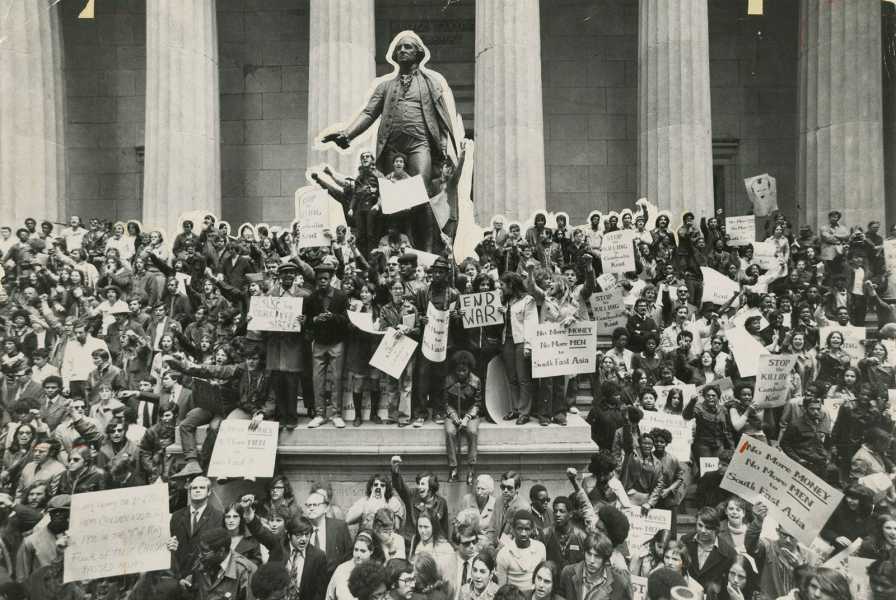
A protest on Wall Street against U.S. involvement in Cambodia, 1970.Photograph © Estate of Jack Manning / Courtesy Howard Greenberg Gallery
For anyone alive during the twentieth century, “Extra! Extra! News Photographs from 1903-1975,” a show of vintage images at the Howard Greenberg gallery (through Nov. 16), is full of triggering flashbacks—moments we could swear we witnessed, and, in some cases, did. Jack Ruby shooting Lee Harvey Oswald, Robert F. Kennedy dying on the floor of the Ambassador Hotel, the Hindenberg in flames, an execution in the street in Saigon. Seeing these images again as they were first distributed, as grainy black-and-white prints with crude crop marks and a wealth of scribbled and printed information on the back, grounds them in history but doesn’t disturb their terrible, marvellous immediacy. The girl kneeling next to the body of a dead student at Kent State on May 4, 1970, will never stop screaming.—Vince Aletti
Experimental Music
A former member of the pop-R. & B. girl group Danity Kane, the singer-songwriter Dawn Richard carefully mapped out an independent career in the twenty-tens, drumming up more left-field takes on dance music, from avant-pop to New Orleans bounce. Meanwhile, the touring musician turned solo multi-instrumentalist Spencer Zahn was operating at the intersection of jazz, electronic, and neoclassical sounds. The two artists realized they were kindred spirits while touring with the singer Kimbra, and a one-off 2018 collaboration led to the 2022 album “Pigments,” an immersive, synesthesia-inducing experience that builds a color palette out of synths and vocals. Now, having just released a new album, “Quiet in a World Full of Noise,” they return to the stage as a unit in complete balance.—Sheldon Pearce (National Sawdust; Oct. 29-30.)
Movies
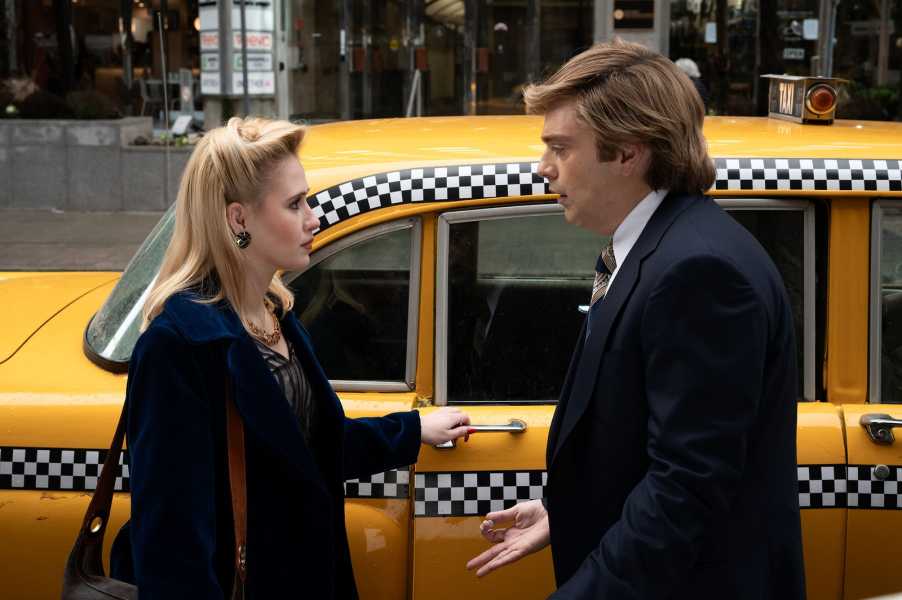
Maria Bakalova, as Ivana Trump, and Sebastian Stan, as Donald Trump.Photograph by Pief Weyman
The director Ali Abbasi’s “The Apprentice,” a fictionalized dramatization of Donald Trump’s rise to celebrity and fall into ruthlessness, in New York in the nineteen-seventies and eighties, is focussed on his relationship with the lawyer and fixer Roy Cohn. While working in the grungy family business of outer-borough middle-class housing, Donald (Sebastian Stan) connects with Roy (Jeremy Strong) in Manhattan high society and seeks his help fighting federal racial-discrimination allegations, learning Roy’s strategies of relentless lawsuits, outrageous falsehoods, and blackmail. Meanwhile, his courtship of Ivana (Maria Bakalova) devolves from romance to prenup to cruelty. The movie, written by the journalist Gabriel Sherman, savors the specifics of backroom deals and displays appalling betrayals but offers little sense of the protagonist’s dark allure or the world in which it sells.—Richard Brody (In wide release.)
Dance
Sergio Bernal is a product of the new Spanish dance, a fusion of styles infused with flamenco and the nineteenth-century escuela bolera, distilled through conservatory training, and honed through ballet. “A Night with Sergio Bernal” combines the pirouettes, leaps, and partnering of ballet, and the percussive footwork and through-the-body drama of flamenco. The music is often classical, and includes works by Manuel de Falla, Ravel (yes, “Boléro”), and Saint-Saëns. Other sections feature a traditional flamenco ensemble. Bernal even performs his own male reinterpretation of the well-worn ballet solo “The Dying Swan,” with steps that show off his lyricism and grace of form.—Marina Harss (Joyce Theatre; Oct. 23-27.)

Bar Tab
Ray Lipstein stumbles upon a Bay Ridge institution.
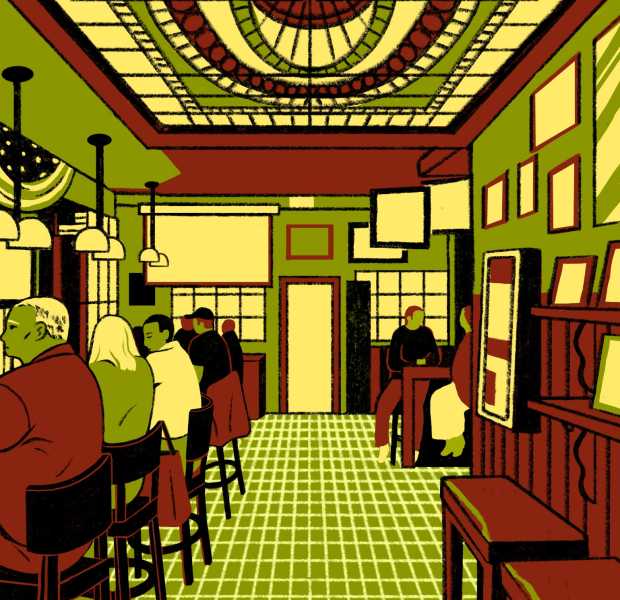
Illustration by Claire Merchlinsky
On a recent Wednesday night down in Bay Ridge, where the Verrazzano-Narrows Bridge looms gorgeously overhead, a millennial with a dead phone stepped into a bar looking for the gym. A sedate row of men were ranged out evenly, each set up before a drink, a handful of dollar bills, and the Mets game—but the calm was shattered by a request for directions. Hands pointed to a door at the far side of the room, which deposited our friend, blinking, up the street from the gym marquee. Kelly’s Tavern is a portal to more than the past, though it is that, too; it takes you across the triangle where Fourth and Fifth Ave. meet, like the Flatiron Building if it had an Irish pub running through it. Here, an upside-down shot glass at your place signifies that someone has, with a timeless, Tony Soprano bravura, paid for the next of what you’re drinking. When a horse race is on, Bernie, a red-haired Irishwoman with a piercing wit, lets you pick a card for two dollars; if yours has the winner’s number, you get the pot, and the whole bar’s notice. It’s not a cop bar—per two regulars, Mario and Billie, it’s an old-man bar, as it was back in the day, before Kelly’s son sold to John, upstairs. Its façade appears in “Saturday Night Fever,” looking exactly the same, but that’s not advertised, and there’s no price list, apart from one for the bar phone: two dollars gets you “On his way,” four for “Haven’t seen him all day.” The bar phone is no longer, but the regulars are, drinking Buds at four bucks a bottle. For the refined or ridiculous, there are a few imported beers, and a tasty Bloody Mary, to keep you from the gym. To say more would be to kill some mystique; we may have said too much already.
P.S. Good stuff on the Internet:
- The woman who could smell Parkinson’s
- Volta Jazz’s “Djougou Toro”
- Kelly Oxford’s TikTok curation
Sourse: newyorker.com